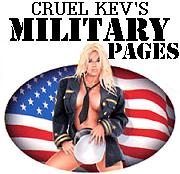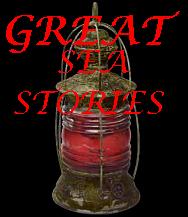Ship Was A Sailing Fire Trap
Defence was warned three months before a fire killed four sailors that their ship, HMAS Westralia, was in grave danger from dodgy fuel lines. The Royal Australian Navy's largest ship at 40,000 tonnes caught fire off Fremantle in May 1998 after fuel leaked from faulty, non-genuine fuel lines on to hot metal, igniting a huge fireball in the engine room. Defence has admitted that an official report, written months before the fire by military and police investigators, specifically warned about the risks from "sub-standard and non-genuine parts" on the ship. The revelation has sparked calls for a royal commission into the Westralia disaster. Lyndon Pelly, father of midshipman Megan Pelly who died in the fire, said: "I hold the navy and the Defence Force responsible for Megan's death and also the deaths of the other three sailors. "Obviously they were deaths that never should have happened had proper procedures and bit of common sense prevailed." Defence concluded at the time that concerns raised by marine engineers about bad fuel lines were sour grapes. That conclusion, which was not backed by expert testimony, was based on information gathered by federal police during an investigation codenamed Operation Majorca, which examined stolen weapons and official corruption.
HMAS Westralia The minute, dated February 6, 1998, and seen by the Herald Sun, followed interviews with a Wollongong maintenance company called Bailey's Diesel Services. It was sent to the Defence Inspector-General's Division. Staff at Bailey's had said they feared a major breakdown on Westralia could cause serious damage and "even loss of life". Three months later the fire, sparked by atomised fuel leaking from non-genuine flexible fuel hoses fitted by contractor Australian Defence Industries, killed sailors Phillip Carroll of Melbourne, Bradley Meek of New South Wales, Megan Pelly of Queensland, and Shaun Smith of Perth, and injured five others. "HMAS Westralia was identified by Bailey's as having a recent history of sub-standard and non-genuine parts installed," the minute said. "Based upon the nature and content of the information provided by Bailey's . . . which included numerous documents and records, it is believed by the undersigned that these allegations should be given the highest consideration." The minute was signed by an investigator from the Defence Inspector-General's Division and AFP officer Peter Smythe. Mr Smythe said he had trouble comprehending the navy would run major seagoing vessels that way. "But Bailey's had the evidence . . . names and even describing the actual parts that had been replaced," he said. "I got the impression they were concerned about safety and people's lives on the vessel." Mr Smythe said the company had been offered inducements by senior navy officers to keep quiet on the faulty parts scam. Mr Smythe said the Howard Government was aware of the allegations because then junior minister Bronwyn Bishop had been informed. Mr Pelly yesterday said he was disgusted Defence had hidden evidence. "I'm really glad Defence has been caught out concealing evidence," he said. "We should reopen the coroner's inquiry to get all this new information out and then follow that up with a royal commission to get to the truth behind the Westralia. Defence confirmed the minute was received but that "no issues of concern" were identified so the document was not passed on to the navy. "That investigation identified that the source of the complaint raised in the document related to the inability of a subcontractor to win work on Defence contracts," Defence said. The existence of the minute was also kept from both a naval board of inquiry and the WA Coroner's inquest. During his inquiry, Coroner Alastair Hope said he wanted to find out how unauthorised fuel lines, which caused the fire, came to be fitted to the ship, saying it was at the heart of the case. Both investigations found that the navy, ADI and hose maker Parker Enzed had failed in their duty of care to the dead and injured sailors.




















<< Home